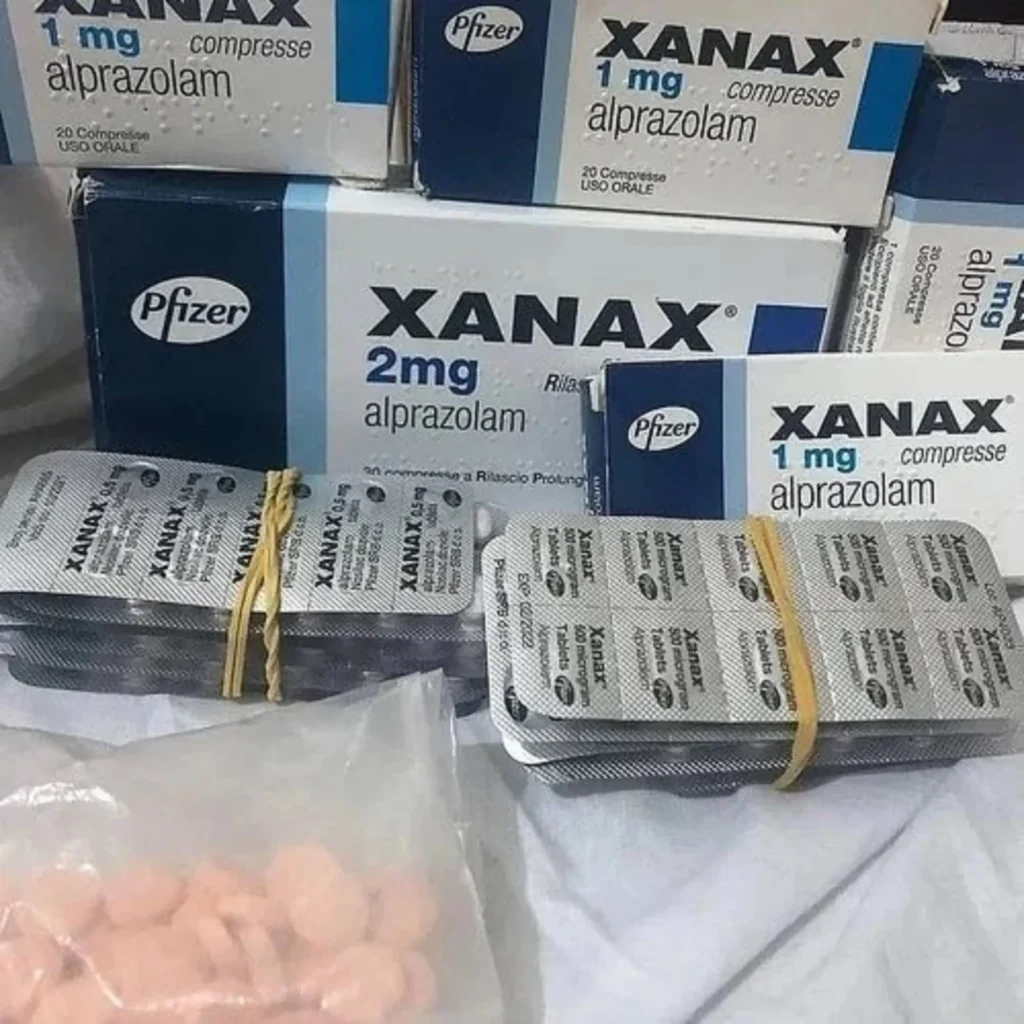| Medicine Name | Xanax (Alprazolam) Farmapram |
| Tablet Strength | 1mg | 2mg |
| Shipment Delivery | 2 Days Fast & Secure Delivery |
| Best Price | Starting from $1.56 per pills |
| Where to Buy? | Visit Pharmacy |
Panic disorder is a condition that causes sudden, intense episodes of fear known as panic attacks. These attacks can occur unexpectedly and often cause physical symptoms such as rapid heartbeat, chest pain, dizziness, shortness of breath, and feelings of losing control. Xanax (Alprazolam) is often prescribed to treat panic disorder because it helps reduce the severity of these attacks. In this article, we will explore the role of Xanax in managing panic disorder and when you should seek professional help.
What is Panic Disorder?
Panic disorder is characterized by recurring panic attacks that come on suddenly and without warning. A panic attack is an intense surge of fear or anxiety that can last for several minutes. The symptoms can be frightening and physically overwhelming, which is why effective treatment is essential for individuals suffering from this condition.
Xanax is a benzodiazepine medication that works by slowing down the brain’s activity, helping to reduce feelings of panic and anxiety. It provides immediate relief, making it particularly useful for those who experience frequent panic attacks. However, Xanax is typically recommended for short-term use because of its potential for dependence and withdrawal symptoms.
How Xanax Helps with Panic Disorder
Xanax works by enhancing the effects of a neurotransmitter called GABA, which helps calm the brain and nervous system. This calming effect helps individuals feel less anxious and more in control during panic attacks.
When a panic attack occurs, Xanax can help reduce the physical and emotional symptoms. It works quickly—often within 30 minutes—and provides relief for several hours. Xanax can be particularly beneficial for people who experience intense and sudden panic attacks that make it difficult to manage anxiety in the moment.
When to Use Xanax for Panic Disorder
Xanax is generally used for short-term relief, especially during acute panic attacks. It is not intended for long-term use but can be a useful tool for managing the immediate symptoms of panic. Some of the situations when Xanax might be used include:
- Acute Panic Attacks: If you experience a sudden and intense panic attack, Xanax can provide quick relief by calming both your mind and body.
- Short-Term Management: If you experience frequent panic attacks but they are not persistent, Xanax can help provide temporary relief while you work on other long-term treatment strategies, such as therapy or lifestyle changes.
- High-Stress Situations: For people who struggle with anxiety in specific situations (such as public speaking or flying), Xanax can offer relief during these triggering events.
The Risks of Long-Term Xanax Use
While Xanax is effective for managing panic attacks in the short term, it is not recommended for long-term use. Long-term use of Xanax can lead to the development of tolerance, meaning higher doses may be required to achieve the same effect. This increases the risk of dependence and withdrawal symptoms when trying to stop using the medication.
Extended use of Xanax can also lead to cognitive and emotional side effects, such as memory problems, confusion, and mood swings. These effects can interfere with daily life and may make it difficult to function normally.
Professional Help for Panic Disorder
For long-term management of panic disorder, it’s crucial to seek professional help. Cognitive-behavioral therapy (CBT) is one of the most effective treatments for panic disorder. CBT helps individuals identify and change negative thought patterns that trigger panic attacks. Over time, this can reduce the frequency and severity of attacks and teach healthier coping mechanisms.
In addition to therapy, your doctor may prescribe other medications, such as selective serotonin reuptake inhibitors (SSRIs), for long-term management. These medications work by balancing neurotransmitters in the brain, helping to reduce overall anxiety levels and prevent panic attacks without the risk of dependence associated with Xanax.
When to Seek Professional Help
If you are experiencing frequent panic attacks, it is important to seek professional help. A doctor or therapist can assess your symptoms, make a proper diagnosis, and recommend an appropriate treatment plan. Professional guidance can help you determine if Xanax is suitable for your case, or if another medication or therapy might be more appropriate.
If you find yourself relying on Xanax more than prescribed or experiencing withdrawal symptoms, it’s crucial to reach out to a healthcare provider. They can help you safely taper off the medication and explore alternative treatments for managing panic disorder.
Conclusion:
Xanax can be an effective tool for providing immediate relief during panic attacks, but it is not a long-term solution. Long-term management of panic disorder requires a comprehensive approach that may include therapy, other medications, and lifestyle changes. Always consult with a healthcare professional to determine the best treatment plan for you. With the right care and treatment, panic disorder can be managed, and you can regain control over your life.
Useful Informational Links:-

